
- Home
- Photography Tours
- Diary / Blog
- Galleries
- Foreign Trips
- Tasmania 2016
- NE Queensland 2016
- Western Alps 2016
- NE Spain 2016
- Australia's Wet Tropics 2015
- Australia's Top End 2015
- SW Australia 2015
- Switzerland 2015
- Andalucia 2015
- Belize 2015
- Australia 2014
- Switzerland 2014
- Belize 2014
- Bahama Islands 2014
- Switzerland 2013
- Ecuador 2012-2013
- Florida 2011-2012
- Vancouver Island 2011
- Australia 2010
- Peru 2008
- Bulgaria 2007
- Lesvos 2006
- California 2006
- New Zealand 2005
- Extremadura 2005
- Goa, India 2004
- The Gambia 2003
- About
October 2016
Cape York, QLD, Australia
Part 2
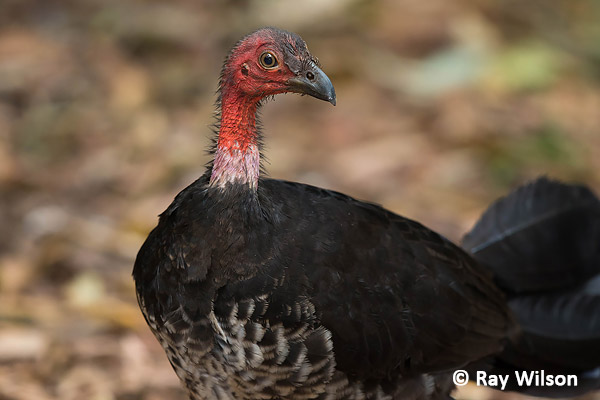
female Australian Brush-turkey (Alectura lathami purpureicollis)
The Cape York subspecies of Australian Brush-turkey, with a purple neck collar, a shorter tail and seemingly smoother skin on the neck pouch of the male, is quite distinctively different from the familiar yellow-collared nominate race found further south. It has been suggested that purpureicollis is potentially a species in its own right but current evidence of sympatry (both populations living in the same area without interbreeding) or parapatry (no significant overlap in the two ranges) is ambiguous and requires further study before any definitive conclusions can be drawn.
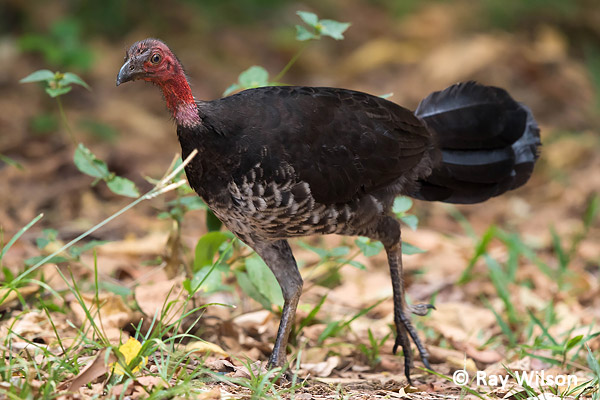
Australian Brush-turkey (Alectura lathami purpureicollis)
Unlike most birds in the rainforest, the brush-turkeys at Iron Range NP are far from shy and were a complete menace at the camping grounds and I ended up constantly trying to chase them away. I suspect too many people have been guilty of feeding them there as one even had the audacity to fly up in front of me to try and snatch a biscuit from my hand while I was eating it!
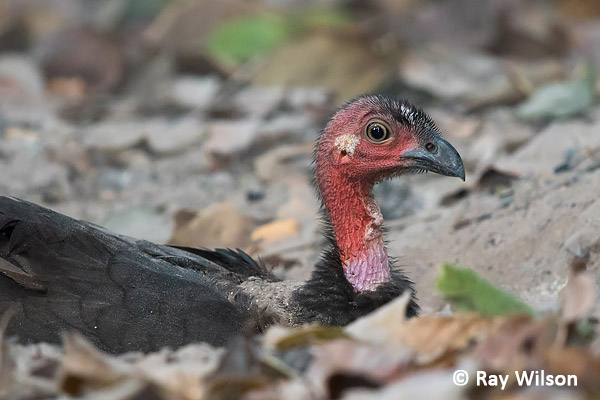
Australian Brush-turkey (Alectura lathami purpureicollis) having a dust bath
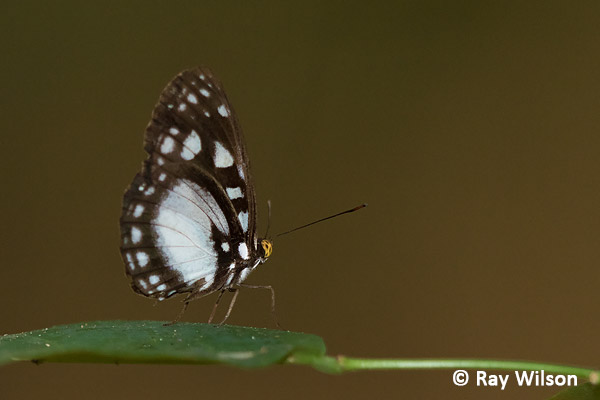
Yellow-eyed Plane (Neptis praslini)
The beautiful fruit of Dillenia alata could easily be mistaken for a flower, and that is indeed what I initially thought this was. The plant itself is used for medicinal purposes by the local aboriginal people where it is locally known as Kapukay, and its presence is also an indicator that a good water source is underneath.
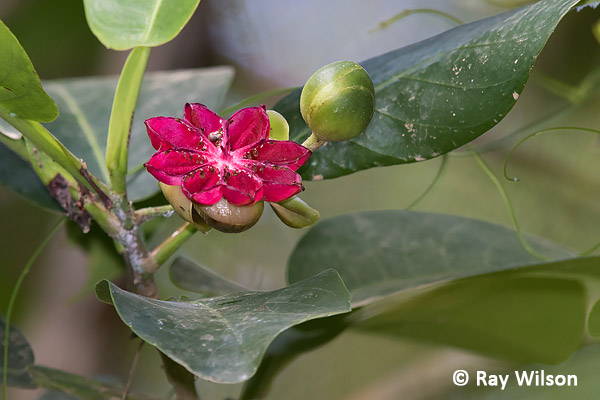
Dillenia alata (Red Beech or Golden Guinea tree) fruit
Spectacled Flying-foxes were regularly seen feeding on fruit during daylight hours.
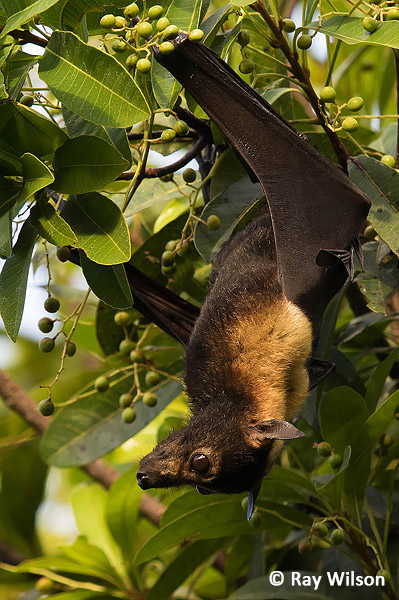
Spectacled Flying-fox (Pteropus brunneus) |
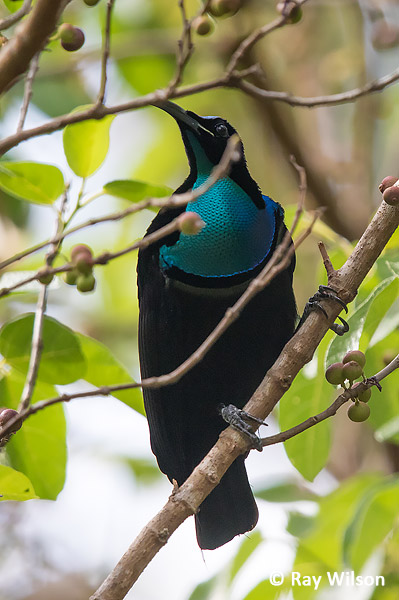
Magnificent Riflebird (Ptiloris magnificus) |
Two species of Birds-of-paradise occur in Iron Range National Park and although both can be commonly heard, neither was easy to see. Magnificent Riflebirds were especially frustrating. I heard them calling practically everywhere in the forests but it wasn't until the last stop on the last day that I finally got a reasonable view of a male, and even then it had a load of branches partially obscuring it!
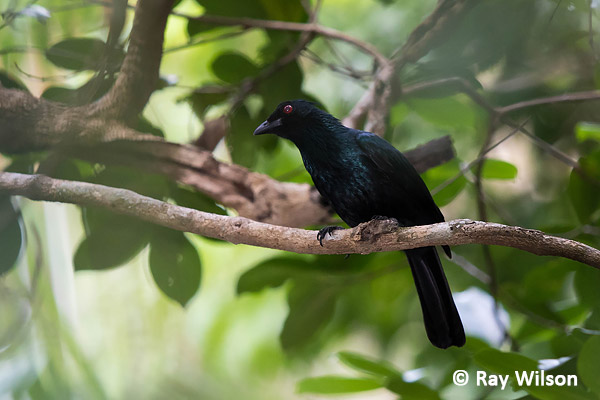
Trumpet Manucode (Phonygammus keraudrenii)
A few seconds after I took the above photo of a Trumpet Manucode, the other bird-of-paradise found in Iron Range NP, it hopped a few metres to the left where it was mostly obscured from my view and started its spectacular display...why couldn't it have done that when it was out in the open?!
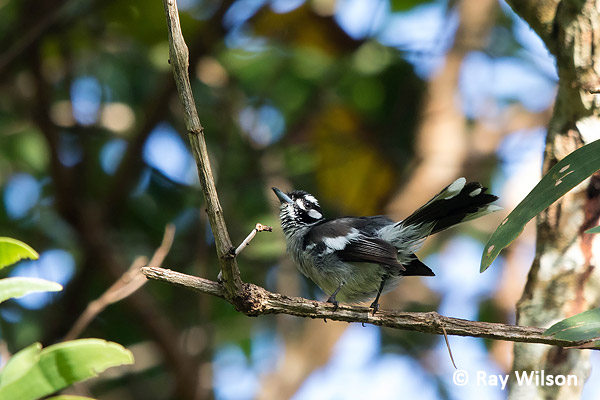
White-eared Monarch (Carterornis leucotis)
White-eared Monarchs are fairly common in the rainforests of eastern Queensland, but are not very often seen as they mostly stay high in the canopy. I was quite fortunate with the individual above came low enough for a reasonably good photo. It would have been better if it had come about 5m closer so I could have got a full frame shot but that's probably just being greedy!

Noisy Pitta (Pitta versicolor)
Noisy Pittas were common throughout the rainforest areas and were most easily seen along the roadsides when they were foraging in the open.
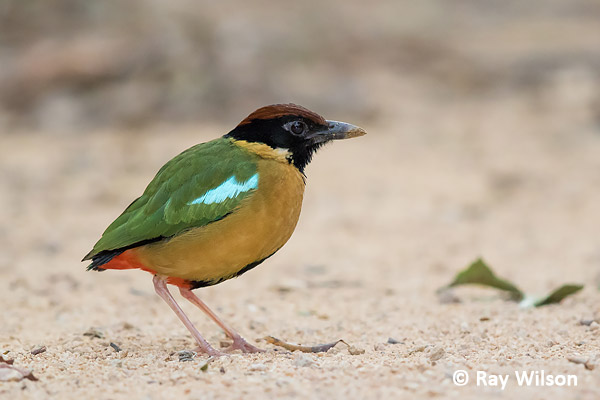
Noisy Pitta (Pitta versicolor)
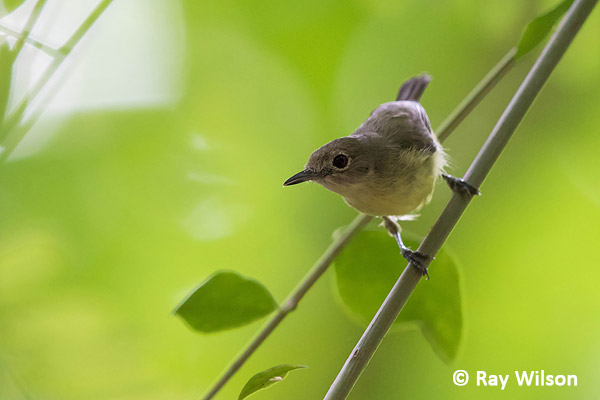
Green-backed Honeyeater (Glycichaera fallax)
Green-backed Honeyeater is the drabbest of the Cape York specialities, closely followed by Tropical Scrubwren both of which fall into the little brown bird category.
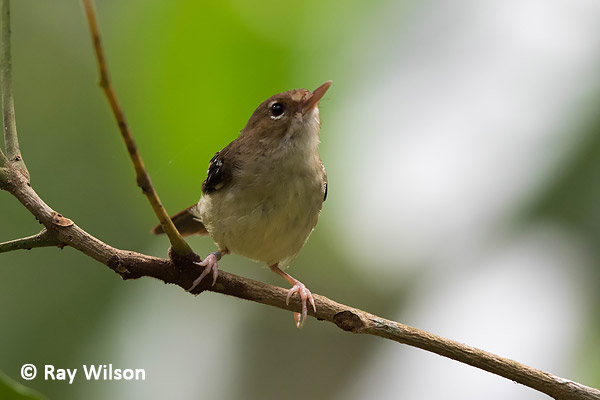
Tropical Scrubwren (Sericornis beccarii)
Tawny-breasted Honeyeater is double the size but not any more colourful and is basically a drab-brown, unspotted version of the much prettier MacLeay's Honeyeater found further south.
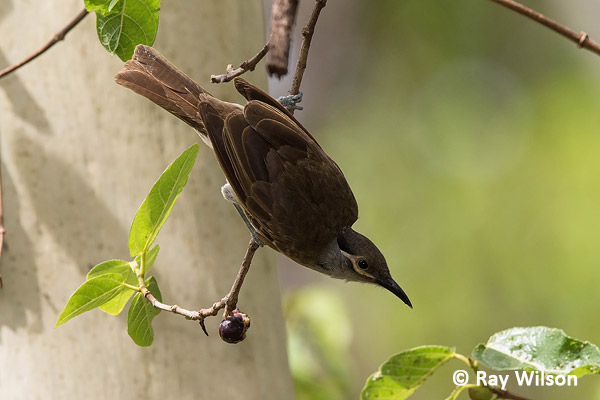
Tawny-breasted Honeyeater (Xanthotis flaviventer)
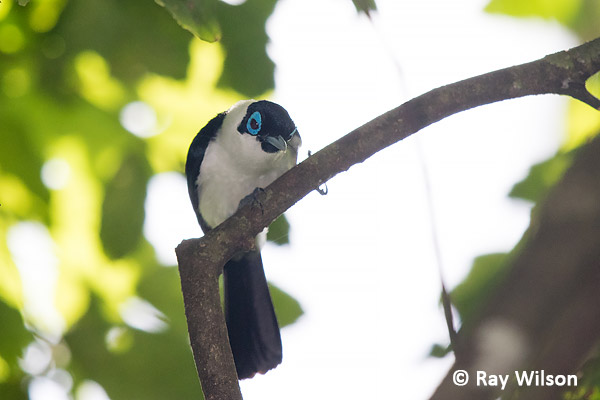
Frill-necked Monarch (Arses lorealis)
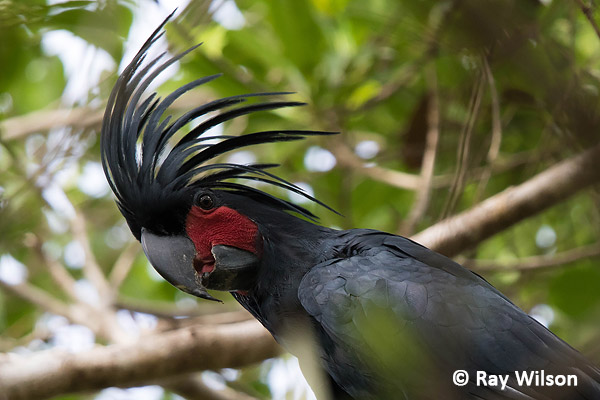
Palm Cockatoo (Probosciger aterrimus)
Other than the Magnificent Riflebird, the Cape York speciality I most wanted to see was the Palm Cockatoo. Prior to the trip, everyone had been telling me I would have no problem and you could see them practically everywhere...not my experience at all! After 5 days of only a couple of brief flight views, this was another species that it wasn't until the final stop on the last day that I finally saw one perched!
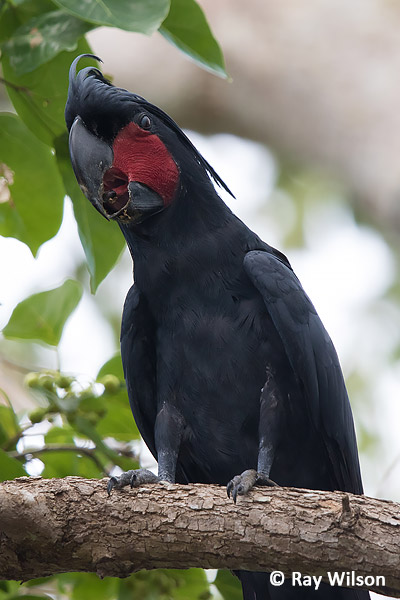 |
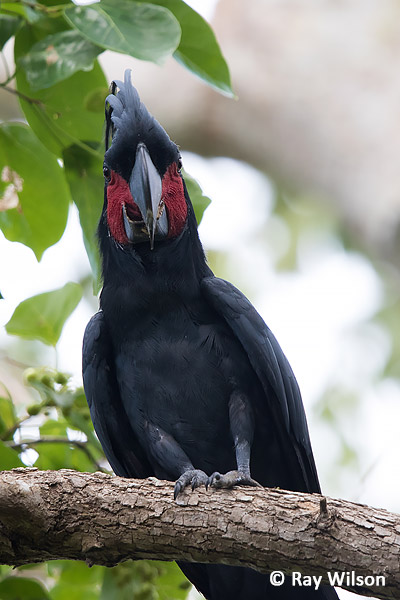 |
Palm Cockatoo (Probosciger aterrimus)
The Palm Cockatoo is the largest of the Australian parrots and its ridiculously long crest plumes render it totally unmistakable.
 |
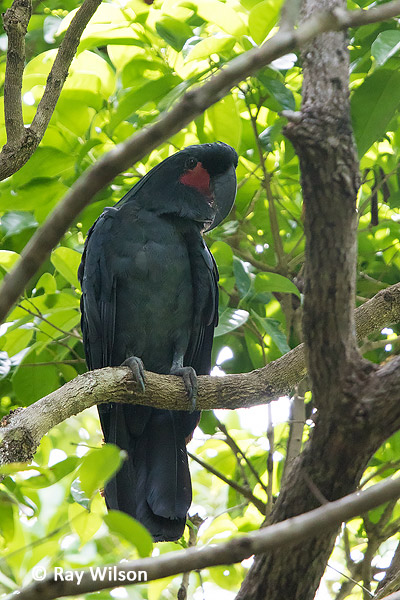 |
Palm Cockatoo (Probosciger aterrimus)
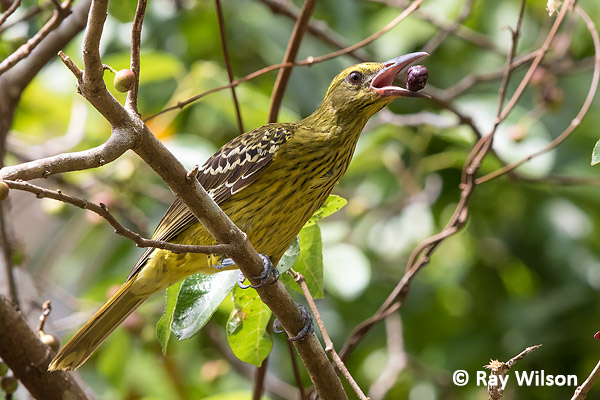
female Green Oriole (Oriolus flavocinctus)
Green Orioles were among the most conspicuous of the rainforest birds and the beautiful liquid notes of their song was the first thing I heard in the pre-dawn chorus every morning.
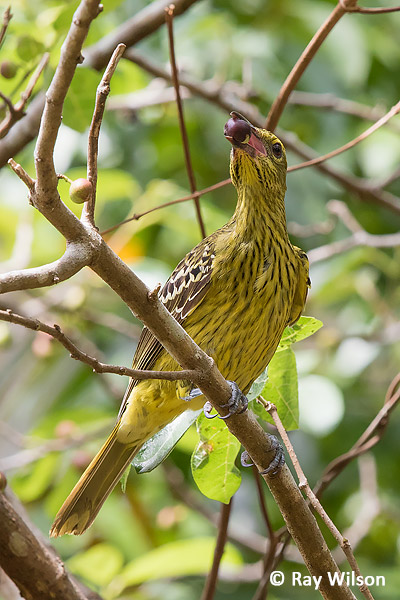
female Green Oriole (Oriolus flavocinctus)
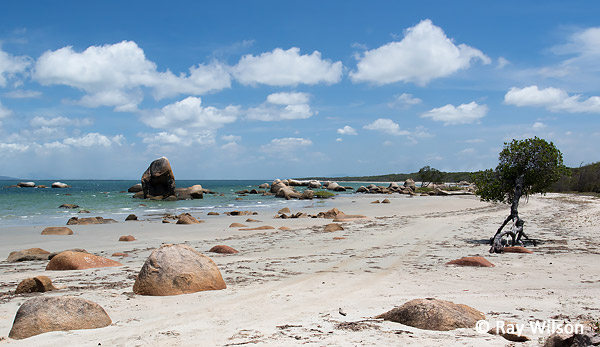
Lockhart River beachfront
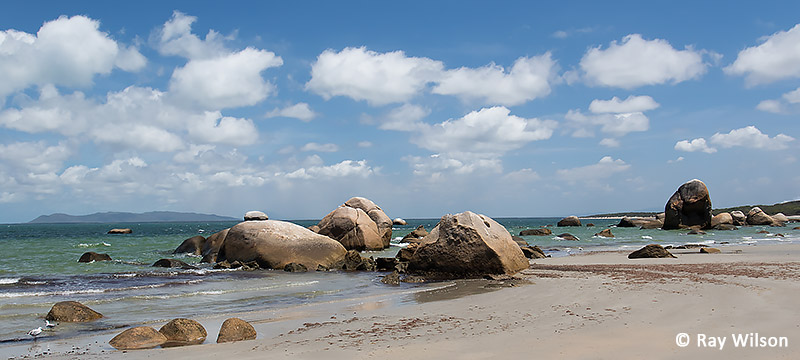
Lockhart River beachfront
Ray Wilson owns the copyright of all images on this site.
They may not be used or copied in any form without prior written permission.
raywilsonphotography@googlemail.com